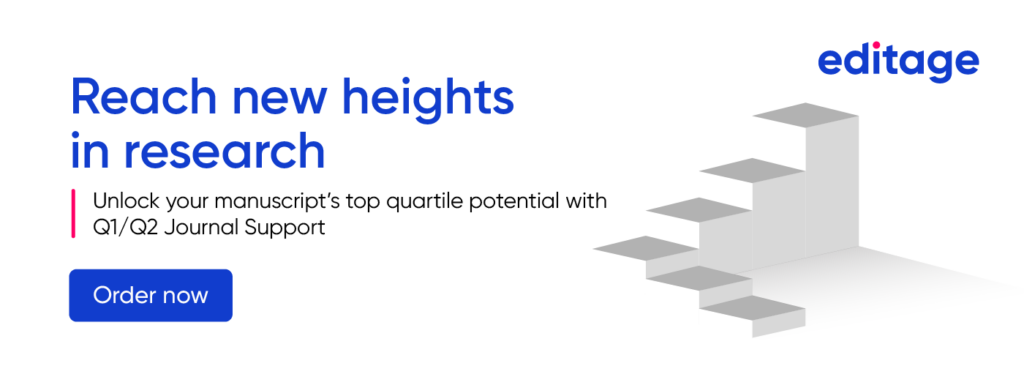
|
Getting your Trinity Audio player ready...
|
Understanding Journal-Specific Guidelines and Requirements: Four Steps to Success
When preparing a manuscript for submission to a scientific journal, understanding and adhering to the journal-specific guidelines is a necessity. These guidelines vary significantly from one journal to another, including differing requirements for the manuscript’s structure, formatting, referencing style, and even the type of content considered suitable for publication. Take note of the following four steps to make sure you get off on the right foot:
- Identify the scope of the journal to ensure that your manuscript aligns with the topics, disciplines, and audience it targets. Journals often have detailed descriptions of their scope which can help you assess the relevance and potential fit of your work.
- Pay close attention to the manuscript formatting guidelines. These include specifics about font size, margins, line spacing, and heading styles. Deviations from these guidelines can lead to immediate rejection, as they reflect a lack of attention to detail and adherence to professional standards.
- Be meticulous with your referencing. Different journals prefer different citation styles such as APA, MLA, or Chicago. Incorrect referencing not only disrupts the consistency of your manuscript but can also raise questions about its academic rigor.
- Consider the requirements regarding supplementary materials, such as figures, tables, and appendices. These elements often have their own set of rules in terms of formatting, resolution, and placement within the manuscript.
Importance of Formatting, Referencing, and Adhering to Submission Guidelines
The attention to formatting, referencing, and submission requirements is critical to manuscript acceptance. Proper formatting ensures that your manuscript is not only readable but also presents your research in a structured and standardized manner. This includes adhering to the specified font type, size, margin widths, and heading styles, as well as organizing the content according to the journal’s preferred structure, such as IMRAD (Introduction, Methods, Results, and Discussion).
Referencing is equally crucial in scientific writing. It acknowledges the work of others, provides context to your research, and allows readers to verify sources or explore further information. Inaccurate or inconsistent referencing can diminish the credibility of your work and may even lead to accusations of plagiarism. Each journal has its preferred citation style, and strict adherence to these styles is a mark of academic integrity and respect for the scholarly community.
Furthermore, compliance with submission guidelines, which often include specifics about file types, resolution of images, length of the manuscript, and even the cover letter format, is essential. These guidelines are in place to facilitate a smooth editorial process and ensure that your manuscript is reviewed efficiently and fairly.
Finally, all journals will require that you upload your submission to their online portal. Again, these vary by journal, and some are easier to work with than others. Sometimes, the process can be cumbersome and time-consuming. Be sure to plan ahead and give yourself enough time to upload to the publisher’s website.
Common Reasons for Manuscript Rejection and How to Avoid Them
Manuscript rejection is a disheartening yet common experience in academic publishing, often resulting from avoidable mistakes. A primary reason for rejection is a lack of alignment with the journal’s scope. Before submission, ensure your research fits the journal’s thematic and methodological focus. Another major factor is poor manuscript quality, including unclear arguments, insufficient data support, and flawed methodology. To avoid this, invest time in thorough editing and peer feedback.
Inadequate literature review, leading to a perception of insufficient understanding of the research context, is also a common pitfall. Ensure your review is comprehensive and up-to-date. Ethical issues, such as plagiarism or data fabrication, are serious offenses that not only lead to rejection but can also tarnish your professional reputation. Adhere strictly to ethical research and writing standards. Lastly, non-compliance with journal-specific guidelines, whether in formatting, referencing, or submission procedures, can result in rejection. Diligently follow these guidelines to increase your manuscript’s chances of acceptance.
Tools and Resources for Ensuring Compliance with Journal Standards
To streamline the manuscript preparation process and ensure compliance with journal standards, numerous tools and resources are available to researchers. Reference management software like EndNote, Zotero, or Mendeley can be invaluable for managing citations and formatting them according to different journal styles, thus reducing the risk of referencing errors (some of these resources are free and run on the cloud. Others are more expensive and subscription based, and run off your own computer. Shop around for the best balance between cost and functionality). Grammar and plagiarism checkers such as Grammarly or Turnitin help in refining the manuscript’s language quality and ensuring the originality of the content.
For specific formatting and style guidelines, the Instructions for Authors section on the journal’s website is the primary resource. Additionally, academic writing guides like the Purdue OWL provide comprehensive advice on various citation styles and writing conventions. Online forums and academic networks can also offer insights and tips from other researchers who have experience with specific journals. Using these tools effectively can significantly enhance the quality of your manuscript and increase its likelihood of acceptance.
Check out Editage editorial services here










Leave a Reply